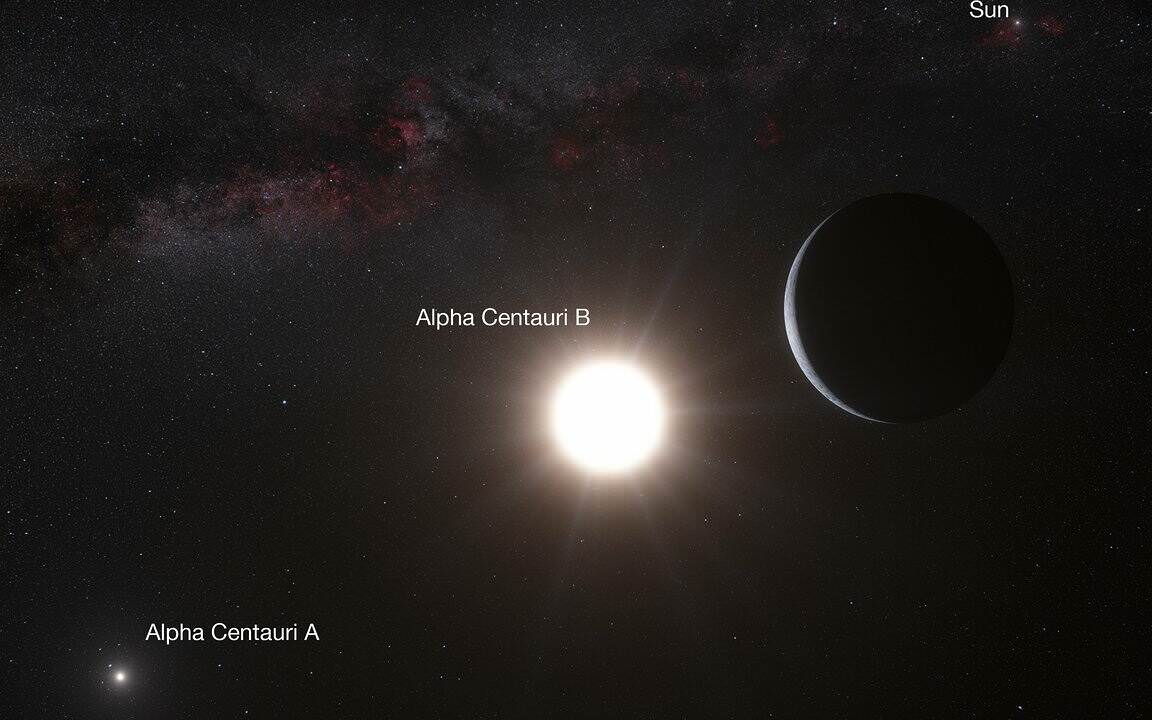
Almost everyone can easily identify the star that is nearest to our planet, although not everyone possesses additional knowledge about it.
Fascinating
This particular star is classified as a yellow dwarf and emerged approximately 5 billion years ago. The sunlight emitted by the Sun takes merely 8 minutes to reach the Earth, spanning a vast distance of around 150 million kilometers (which is considered as 1 astronomical unit). It serves as the central body around which 8 planets with their moons, numerous comets, and meteorites orbit.
The weight of this star surpasses Earth’s weight by approximately 330 thousand times, and its dimensions are larger by a factor of 109! For a better understanding, you can refer to the video below, which vividly illustrates the comparative scale of the planets with the Sun.
The Sun, which illuminates the sky of our planet, is an extraordinary celestial body. It is the source of energy that gave birth to life on Earth. It is fascinating to note that the Sun is primarily composed of 90% hydrogen and 10% helium. Although there are other elements present in its composition, their abundance is only 0.1%.
In the past, there was a belief that the Sun did not move. However, this notion was disproven by Galileo Galilei in 1610 when he observed the movement of spots on its surface through his telescope. This observation led to the conclusion that the Sun is indeed rotating. Interestingly, its rotation is not uniform throughout: it takes approximately 25 days for it to complete one rotation around its axis near the equator, while near the poles, it takes around 30 days. The Sun rotates at a speed of approximately 200-220 kilometers per second, and it would take around 200 million years for it to make a complete revolution around the center of the galaxy.
The Sun and the Existence of Life on Earth
The Sun emits an enormous amount of energy, specifically 6.5 kW per square centimeter of its surface. Remarkably, this energy remains consistent throughout the Sun’s lifespan. It is intriguing to note that merely a minuscule fraction of this energy, one billionth to be exact, would be enough to sustain life on Earth. If the energy transferred to our planet were to fluctuate, either increasing or decreasing, it is highly probable that life on Earth would cease to exist.
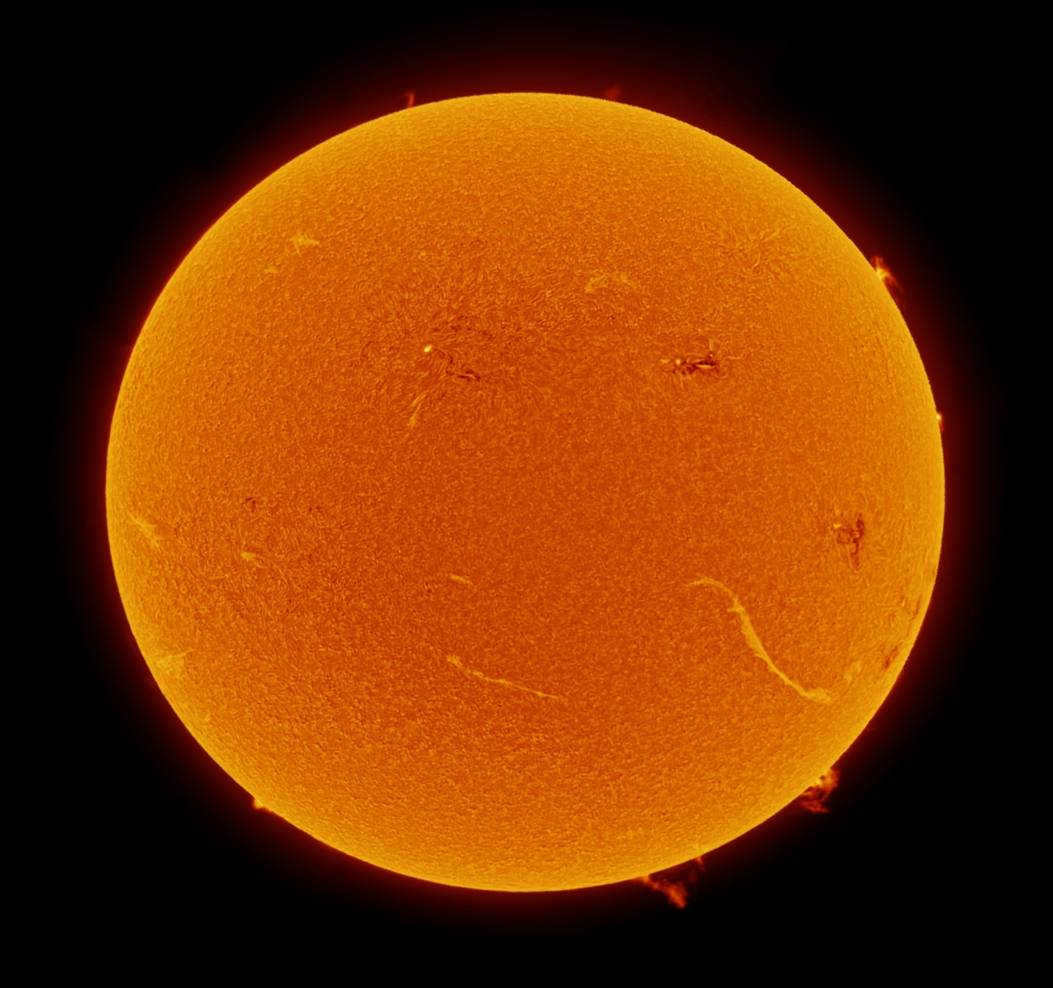
The Sun as seen in the H-alpha hydrogen line
Based on scientific calculations, it has been determined that the Sun has a limited lifespan. It is estimated to exist for approximately 5 billion more years, during which it will gradually heat up and expand in size. As a result of these changes, the conditions on Earth will also undergo significant alterations, eventually becoming inhospitable for life.
If you found this information interesting, why not share it with your friends?

Origin of the Sun and Solar System
The planetary system
The solar system is a planetary system that revolves around the central object called the Sun. The Sun makes up about 99.87 percent of the total mass of the entire system, while the planets and other bodies make up the remaining 0.13 percent. It’s incredible to think about the vast difference in mass and size between the Sun and the other bodies in the system. It’s like comparing dust particles swirling around a ball, with Earth being just one tiny speck of dust. This puts into perspective how small our planet is in the grand scheme of space. Zooming out even further, the Solar System is a part of the Milky Way Galaxy, highlighting the immense size of space. When faced with such unimaginable distances, it’s difficult to even consider our planet as anything more than a speck of dust.
The Solar System consists of a total of eight planets, which are arranged in order of their distance from the Sun. These include Mercury, Venus, Earth, Mars, Jupiter, Saturn, Uranus, and Neptune. Earth, being the third planet from the Sun, is commonly known as the “Third Planet.” Aside from these major celestial bodies, there are also two areas in the solar system that contain smaller objects. The first region is located between Mars and Jupiter and is home to notable objects such as the dwarf planet Ceres, as well as asteroids Pallada, Vesta, and Hygeia. The second region, known as the trans-Neptunian region, is situated beyond the orbit of Neptune. Within this region, you can find dwarf planets like Pluto, Haumea, Makemake, and Erida. Additionally, there are other transneptunian objects present, including Sedna, Quavar, and Orcus.
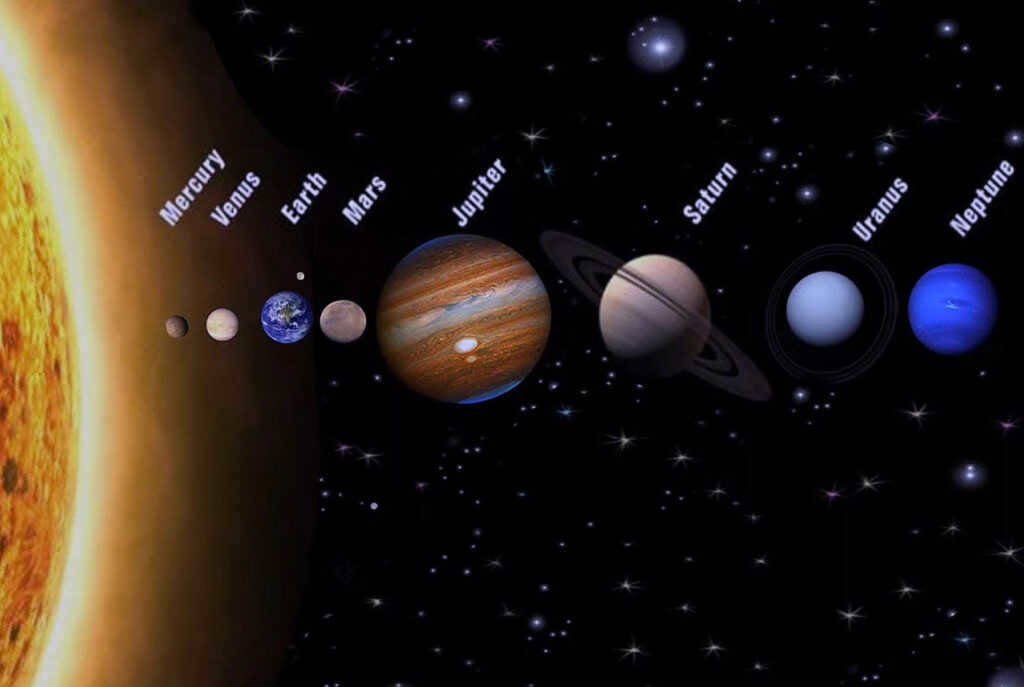
Position of the planets within our solar system
All celestial bodies within our solar system complete their orbits around the Sun in an elliptical path. Mercury, being the nearest planet to the Sun, boasts the highest angular velocity, completing a full revolution in just 88 Earth days. In contrast, it takes the Earth 365 days (or one year) to complete its revolution. On the other hand, Neptune, the most distant planet in our solar system, requires a staggering 165 Earth years to complete a single revolution around the Sun.
Our Home Galaxy – Milky Way
The galaxy we call home is known as the Milky Way. It falls into the category of spiral galaxies. Our Sun, along with its accompanying solar system, orbits around the center of this galaxy and is just one of the many stars it contains. The Milky Way takes on the form of a disk with spiral arms, and it thickens as it approaches the center. When observing the night sky in a relatively dark area, one can see a faint, luminous streak commonly referred to as the Milky Way. By looking up without any assistance, we can not only see this band but also all the stars that surround it. Given that we are situated within the galaxy itself, we lack the ability to view the Milky Way from an external vantage point. The visual representation of our galaxy is largely based on scientific speculation, as the immense distances involved make it impossible for human beings to travel to such remote locations. This is unlikely to change in the foreseeable future. For instance, the distance from the Sun to the center of our galaxy spans 28,000 light years.
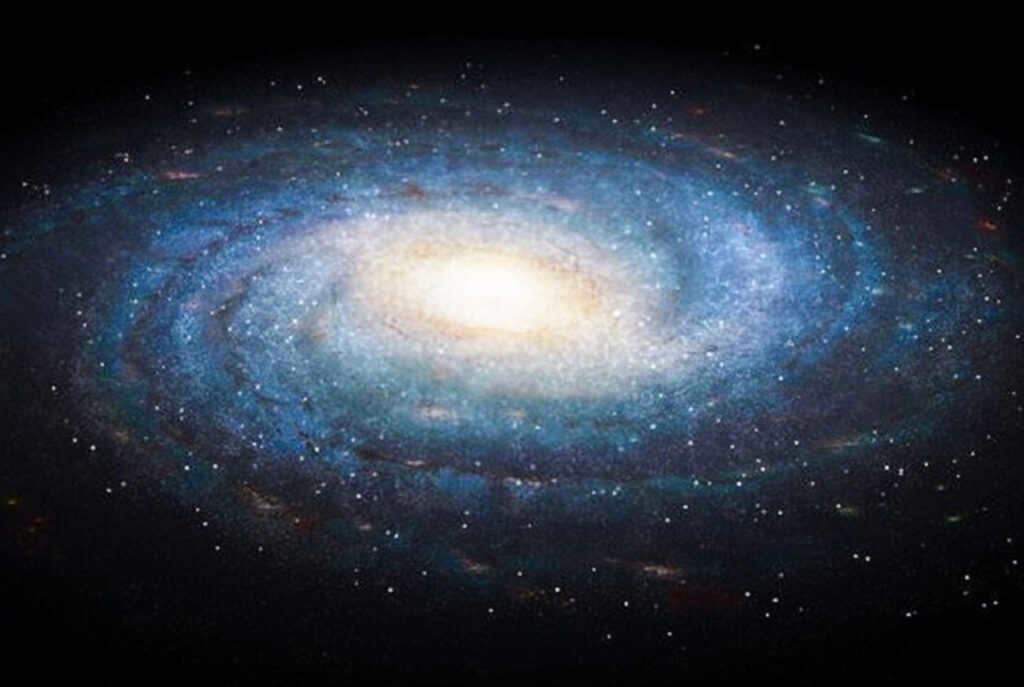
The star closest to planet Earth in our Milky Way galaxy.
A light year represents the distance covered by electromagnetic waves, or light, in a vacuum over the course of one Julian year. This distance is incredibly vast. In just one second, light can travel approximately 299,792,458 kilometers (although it is commonly rounded up to 300,000 km/s). Now, try to comprehend the number of seconds in an Earth year and the total distance covered during that time. It is beyond our imagination. And if you were to multiply that by 28,000 light-years, the result would be inconceivable. And this is not even the outermost boundary of our galaxy, the Milky Way (specifically, not the edge of the galactic disk). This gives you an idea of the immense distances that exist within space, and this is just within our own galaxy. There are countless other galaxies in the Universe. However, our understanding of this subject is limited by our ability to explore deep into the Universe.
The Universe and Humanity
The Earth’s population is currently in the early stages of exploring the vastness of the Universe. We are merely scratching the surface of what lies beyond our immediate vicinity. When we consider the magnitude of the challenges that await us, the petty conflicts and disputes among humans on Earth pale in comparison. Our planet is but a tiny speck in the grand scheme of the Universe, and the human race itself is minuscule. Throughout the history of mankind, only a handful of individuals have been able to accomplish something truly significant. From a cosmic perspective, human life is fleeting, passing by in the blink of an eye. In contrast, the Sun has been shining for 4.57 billion years and still has more than 5 billion years left in its lifespan. The future and longevity of humanity, however, depend solely on the choices and actions of the people themselves.

Is it true or false that the tallest building in Europe and Russia is closer to the planet Earth than any other star?
▲ Is it real or fake?
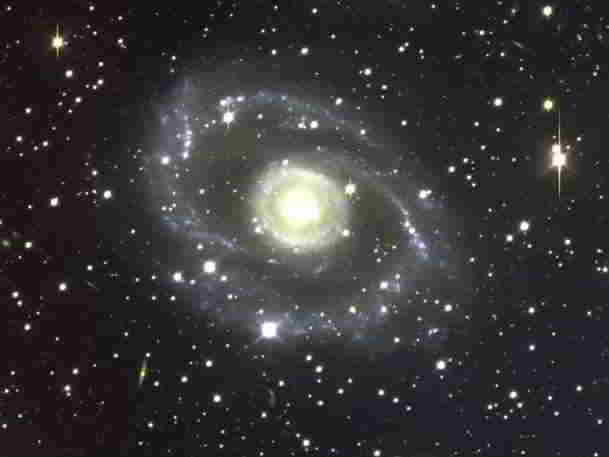
Alpha Centauri holds the distinction of being the star system closest to our Sun.

Alpha Centauri is the most luminous object in the southern part of the Earth. The approximate distance to it is slightly more than 4 light years.
This star system is composed of a binary pair of stars, namely Alpha Centauri A and Alpha Centauri B, as well as a faint red dwarf known as Proxima Centauri. The characteristics of Centauri A and B stars closely resemble those of the Sun. They revolve around a shared center of mass in an 80-year cycle.

The triple star system also features Proxima Centauri, which is the nearest star to the Sun.
The term “Proxima” in the star’s designation is of Latin origin and means “closest.” This is indeed accurate, as the star is currently only 4.22 light-years away from the Sun, making it the closest star to us. However, despite its close proximity, it is not visible to the naked eye from Earth.
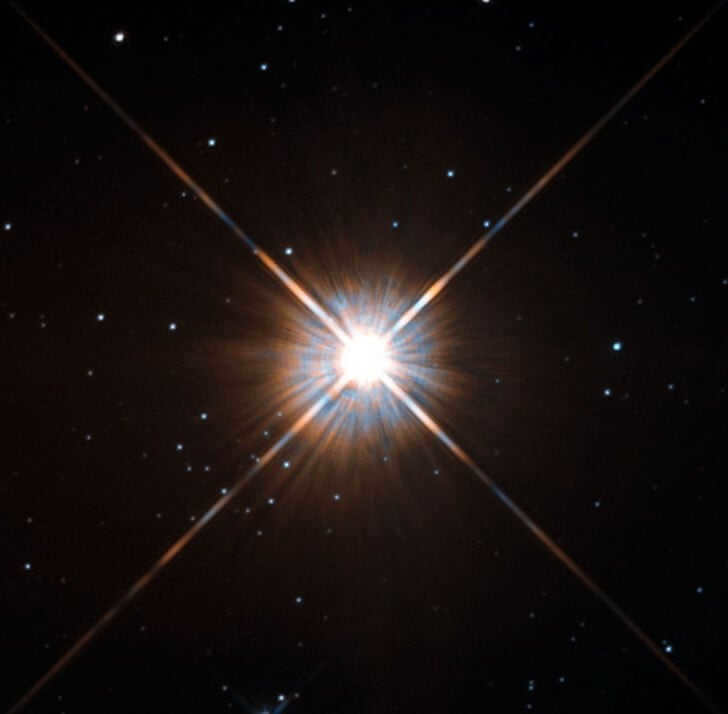
This is what Proxima Centauri, the star closest to Earth, looks like in images captured by the Hubble Space Telescope
This incredible photograph of Proxima Centauri was taken using the powerful Hubble Space Telescope. The image appears exceptionally bright due to the star’s close proximity to Earth, causing the highly sensitive sensors of the Hubble to be inundated with the photons emitted by the star.
Proxima Centauri is classified as a red dwarf star, resulting in certain characteristics. It has a mass approximately eight times smaller than that of the Sun, a diameter one and a half times that of Jupiter, and a luminosity just 0.006% of the Sun’s. However, like many other red dwarfs, Proxima is known to be a variable flaring star, occasionally experiencing spikes in its luminosity that can double its brightness. This variability, if there are planets orbiting the star, could potentially be detrimental to the existence of life. Nevertheless, no planets have been discovered in close proximity to Proxima Centauri thus far.
However, red dwarfs have the ability to endure for countless trillions of years. When the Sun eventually transforms into a white dwarf, Proxima will continue to emit a faint, yet enduring, light for an incredibly long period of time…
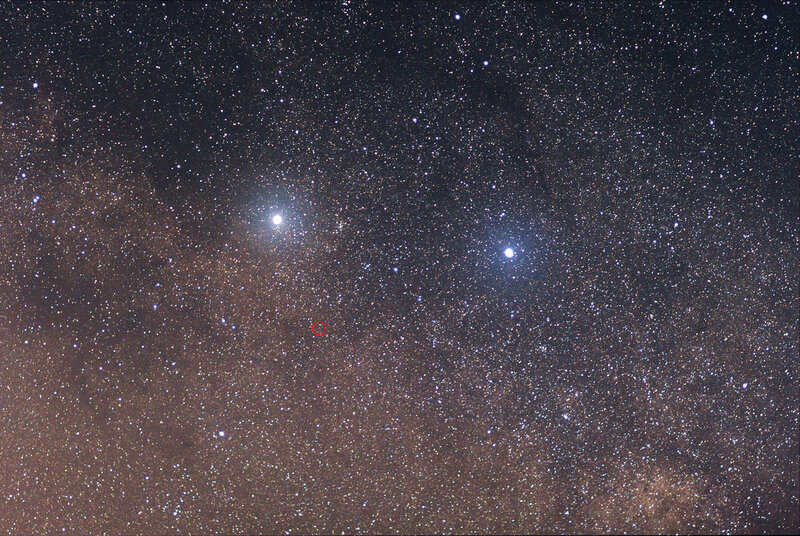
The stars visible in the image are Centauri A and Centauri B. Proxima Centauri can be seen inside the circle.
Proxima Centauri is believed to be in orbit around the binary star system composed of Alpha Centauri A and Alpha Centauri B, which are located 0.24 light-years away.
Proxima Centauri has a very low mass, which allows it to barely sustain the synthesis of helium from hydrogen in its core, resulting in a dim glow. It is approximately seven times lighter than the Sun and has a surface temperature of “only” 3000 degrees, which is half of our own star. Its brightness is 150 times less than that of the Sun.
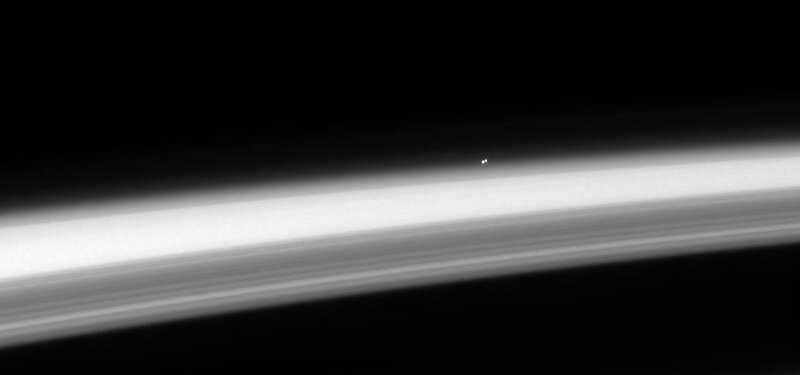
The Cassini photograph captures the Alpha Centauri star system
It’s important to mention that in approximately 25,000 years, the Centauri system will come closer to us at a minimum distance of 3.26 light years, and then gradually move away from the Solar System, reaching a distance that won’t allow Alpha Centauri A to be seen with the naked eye even after 100,000 years. However, as the Sun moves through the Milky Way, it will encounter other stars, some of which will come much closer to us than the Centauri system. For instance, Gliese 710 is expected to approach the Sun at a distance of less than 1 light-year, but this will only occur in 1.4 million years. In 9000 years, the closest star to the Sun will be Barnard’s star, which is rapidly heading our way.
A new planet has been found in the star system closest to our Sun.


Many individuals are curious about the planet that is closest to Earth. The answer is Venus. When it is at its closest point in orbit, the distance between Venus and Earth is only 38 million kilometers.
Additionally, the planet closest to the Sun has also been identified. At Alpha Centauri B, there is currently an exoplanet that is remarkably near the star, only 6 million kilometers away. However, based on modern understanding, the conditions for life to exist there are not feasible.
On October 16, 2012, during a specially arranged press conference, European astronomers made an exciting announcement regarding the discovery of a planet that has a mass similar to Earth. This remarkable planet orbits the smaller of the two sun-like stars within the Alpha Centauri system. The observations leading to this discovery were carried out using the HARPS spectrograph, which is mounted on the 3.6-meter telescope at the ESO observatory in La Silla, Chile. It’s worth noting that HARPS is currently the most precise instrument for detecting exoplanets through radial velocity measurements.
Remarkably, this planet completes its orbit around the star Alpha Centauri B in just 3.2 days and possesses a mass that is comparable to that of Earth.
Not everyone has knowledge beyond the fact that the star closest to Earth is the Sun.
The Sun is classified as a yellow dwarf and has been in existence for approximately five billion years. Despite its immense distance of about 150 million kilometers (which is known as 1 astronomical unit), the Sun’s light reaches Earth in just 8 minutes. It serves as the central body for all planetary systems, with 8 planets and their satellites, as well as numerous comets and meteorites, revolving around it.
In terms of size and mass, the Sun surpasses Earth by a staggering 330 thousand times and 109 times, respectively! To better visualize this, you can watch the video below, which provides a clear representation of the scale of the planets in relation to the Sun.
The Sun is the most luminous entity in the entirety of Earth’s atmosphere. The life-giving energy emitted by the sun is the fundamental catalyst for the emergence of life on our planet. It is fascinating to note that the sun primarily consists of 90% hydrogen and 10% helium. Naturally, there are other elements present as well, albeit in a mere 0.1% proportion.
Preliminary investigation
In ancient times, it was widely believed that the Sun was stationary. However, this notion was dispelled by the renowned scientist Galileo Galilei in 1610. Using his revolutionary telescope, Galileo observed the movement of spots on the Sun’s surface, leading him to conclude that it actually rotates. Interestingly, the Sun does not rotate as a solid body. Its rotation period varies depending on its latitude, with the equatorial region completing one rotation in approximately 25 days, while the polar regions take around 30 days. With a staggering velocity of 200-220 kilometers per second, the Sun requires around 200 million years to complete a full revolution around the center of our galaxy.
The Sun and its Impact on Life on Earth
The Sun emits an enormous amount of energy, specifically 6.5 kW per square centimeter of its surface. This energy remains constant throughout the Sun’s lifespan. Surprisingly, only a tiny fraction of this energy, one billionth to be exact, is necessary for supporting life on Earth. Any significant alteration in the amount of energy reaching our planet could potentially lead to the extinction of life on Earth.
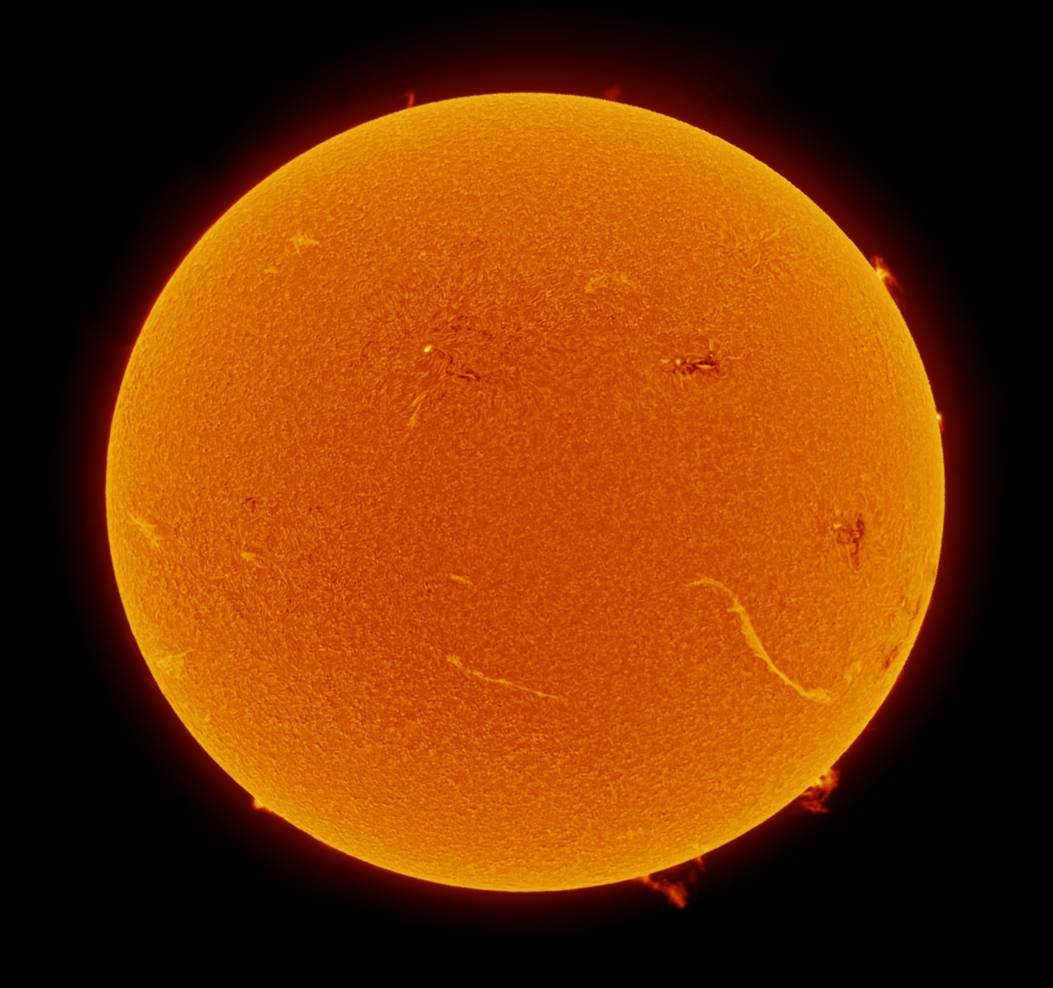
The nearest star to our planet is the Sun. Discover an extraterrestrial star – the brilliant Alpha Centauri, along with the 20 nearest stars to Earth, including their distances.
If you want to test the knowledge of your acquaintances, you can inquire about the star that is closest to Earth. Most people tend to mention Betelgeuse or Sirius right away. However, there is a twist to this question. Naturally, the closest star to Earth is the Sun, which is approximately 150 million kilometers away. But aside from our Sun, which celestial object holds the title of the closest star to Earth?
The Sun’s nearest neighbor is Alpha Centauri, which is also the closest star to Earth. It holds the third position in terms of brightness and is located just 4.37 light-years away. However, Alpha Centauri is not a single star, but rather a triple system. Within this system, there is a binary pair that orbits a shared center of gravity every 80 years. Alpha Centauri A is brighter than our Sun, while Alpha Centauri B is slightly dimmer. The third component of this system is known as Proxima Centauri, which is worth remembering as it is the nearest star to Earth, situated just 4.24 light-years away.
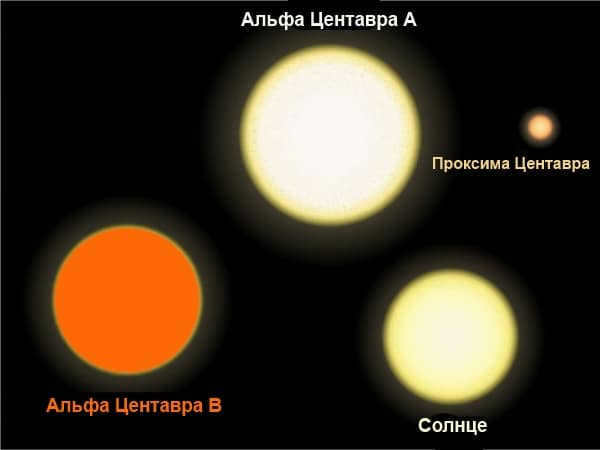
The Alpha Centauri system is situated in the constellation Centauri, which is only visible from the southern hemisphere. However, even in that region, the star cannot be observed with the naked eye. This is because it is too dim and would require a powerful telescope for viewing. To put it into perspective, it would take New Horizons approximately 78,000 years to approach Proxima Centauri.
For the past 32,000 years, Proxima Centauri has held the title of the nearest star to Earth, and it will continue to do so for another 33,000 years. After that period, it will reduce its distance to 3.11 light-years. Following Proxima Centauri, Ross 248 becomes the closest star to Earth.
The Nearest Star to Earth in the Northern Hemisphere
The nearest star to Earth in the northern hemisphere is known as Barnard’s Star. It is a red dwarf located in the constellation Serpentor. However, due to its dimness, it cannot be seen with the naked eye. If we consider only the stars that can be observed without the assistance of special equipment, the closest one is Sirius, which is located 8.6 light-years away. Sirius is twice as large and massive as our Sun.
What is the method for measuring distances to stars?
The distance to a star from Earth is determined using parallax. Why is this method employed? Imagine extending your arm and placing your finger in front of a faraway object. Now, close one eye at a time and notice how the object appears to shift. This phenomenon is known as parallax.

To determine the distance to the star, it is important to consider the position of our planet on its orbit, specifically during the summer season. Once the measurement is taken, we need to wait for 6 months until the planet is on the opposite side, and then take another measurement, this time in relation to a different object. This method is applicable to any object within a range of 100 light years.
Within a radius of 17 light years from our solar system, there are a total of 45 stars. It is estimated that there could be up to 200 billion stars in our galaxy, although some of them are so faint that they remain undetectable.
This is a compilation of the closest stars and star systems to Earth, along with their distance measured in light-years. Some of these star systems consist of multiple stars but are considered as one entity. Here is the list:
- Alpha Centauri – 4.2;
- Bernard’s Star – 5.9;
- Wolf 359 – 7.8;
- Laland 21185 – 8.3;
- Sirius – 8.6;
- Leiten 726-8 – 8.7;
- Ross 154 – 9.7;
- Ross 248 – 10.3;
- Epsilon Eridana – 10.5;
- Lecaille 9352 – 10.7;
- Ross 128 – 10.9;
- EZ of Aquarius – 11.3;
- Procyon – 11.4;
- 61 Swan – 11.4;
- Struve 2398 – 11.5;
- Groombridge 34 – 11.6;
- Epsilon of Indian – 11.8;
- Dx Cancer – 11.8;
- Tau of China – 11.9;
- GJ 106 – 11.9.
According to NASA, there exist 45 other stars within a distance of 17 light-years from the Sun. Some of them are so tiny and faint that detecting them is nearly impossible. Perhaps, with the advancement of technological capabilities, scientists will be able to discover star systems that are even closer.
This is a question that can be rightfully considered a classic because many people struggle with it difficulty. I once posed this question to a friend and observed his attempt to recall any known stars stars. Imagine his surprise when I explained to him which star is the nearest to our planet..
What is the closest star to Earth called?
It is quite clear. The closest star to Earth is called the sun. It is the only star in our solar system. The distance between the sun and Earth is approximately 150 million kilometers. It may seem like a great distance to cover 🙁

Different celestial bodies
We can approach this question from a different perspective and attempt to answer it, which star is the closest to our planet, excluding the Sun. Many individuals are familiar with Alpha Centauri. It is the third brightest star in the sky. The distance from our planet is 4.35 light-years away. However, it is not just a solitary star, but rather a system of three stars. The largest star in the system is Alpha Centauri. It is significantly larger and more luminous than our own star. Alpha Centauri B is considerably less massive than our own Sun. The third component of this system is Proxima Centauri, a red dwarf. This constellation is only visible from regions of the southern hemisphere. and it is impossible to distinguish the red dwarf without the assistance of advanced astronomical equipment.
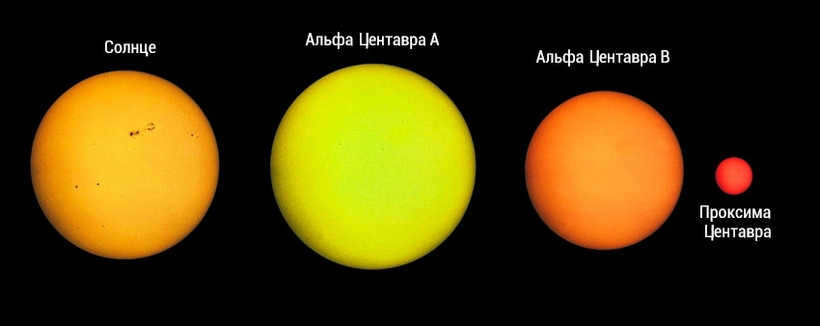
How can you determine the distance to stars?
The distance to stars can be measured using a technique called parallax. To demonstrate this, you can conduct a simple experiment. Start by making a fist and then extending your arm with your thumb extended. Choose a distant object as your target and align your thumb with it. By closing one eye and then the other, you will notice that your thumb appears to be either directly in front of or to the side of the target. This is the essence of the parallax method.
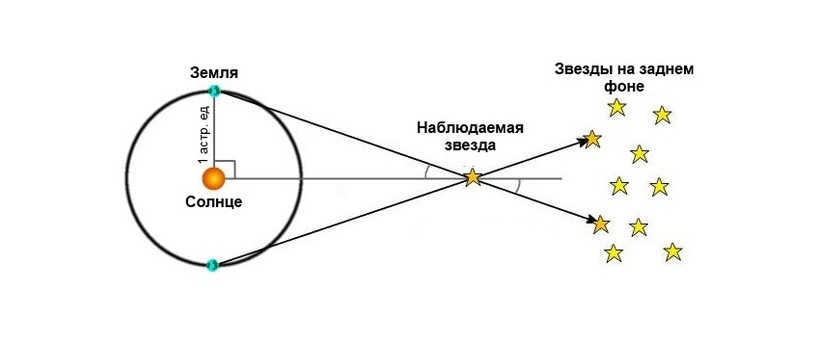
When determining the proximity of a celestial body, you can calculate the angle to an object in relation to a specific reference point, known as a reference point, during the period when the planet is at a certain point in its orbit. This method is applicable only to stars that are located within a distance of 100 light years from our planet.
The Nearest Stars
Here are the stars and systems that are closest to our planet:
- Alpha Centauri – 4.35 light-years away;
- Bernard’s Star – 5.9 light years;
- Wolf 359 – 7.8 light-years;
- Laland 21186 – 8.3 light years;
- Sirius – 8.6 light-years.
In total, within a range of 14 light-years, we can count 32 star systems.
Many people may not know the answer to the question of what is the name of the nearest star to Earth. The correct answer is actually very simple. The closest star to us is called the Sun.
Note: This article is intended for readers over the age of 18.
The Sun, the nearest star to Earth
The closest star to us is the brilliant sphere that emerges above the horizon each day. It originated approximately 4.5 billion years ago. Belonging to a cluster of youthful stars, scientists theorize that the birth of this celestial body can be attributed to a supernova explosion. Evidence supporting this notion includes the abnormally high concentration of gold within the solar system. The radiance emitted by the Sun consists of luminous gases and trace amounts of various other elements.
The chemical composition of the Sun is as follows:
- Hydrogen (70%);
- Helium (28%);
- Iron;
- Nickel;
- Oxygen;
- Nitrogen;
- Silicon;
- Magnesium.
The fusion reactions in the Sun generate an immense amount of energy. These reactions involve the conversion of hydrogen into helium. The surface temperature of the Sun is approximately 5780 kelvin (about 5500 ̊C). In terms of size, the Sun is not the largest star in the universe. It is located in one of the arms of the Milky Way galaxy. The Sun’s colossal gravitational force is responsible for making it the central body around which the planets of the solar system, as well as asteroids, meteorites, space dust, and other cosmic bodies, orbit.
- The Sun accounts for 99.8% of the total mass of our planetary system;
- Every second, 4 billion tons of matter are converted into energy;
- The Sun could accommodate 1,300 planets of a similar size to our own;
- The diameter of the Sun is 109 times that of the Earth;
- The mass of the Sun is comparable to 332,940 times the mass of the Earth.
- The brightness of the Sun exceeds that of 85% of the stars in the Milky Way galaxy;
- The Sun’s light is actually almost white: it appears yellow as it passes through the Earth’s atmosphere;
- It takes approximately eight minutes for photons of light emitted from the Sun’s surface to travel to planet Earth;
- The Sun’s magnetic field is incredibly strong and has the ability to change its direction every 11 years;
- Solar wind, sunspots, flares, and giant prominences are all effects of the Sun’s magnetic field;
- It has been observed that solar cycles have a duration of approximately 11 years;
- Without the magnetic field of our closest star, geomagnetic storms and the existence of our planet would not be possible, as they arise from the interaction of magnetic force currents.
The closest star, known as the Sun, plays a vital role in supporting life on our planet. It serves as the primary source of light necessary for the process of photosynthesis. This crucial process allows for the creation of organic compounds from inorganic substances and facilitates the synthesis of oxygen, which is essential for life as we know it. Without the Sun, life on Earth would not have been able to originate or thrive.
Photosynthesis, enabled by the Sun’s energy, has been a fundamental process for ancient plants. Through this process, these plants were able to convert sunlight into energy, which is stored in the form of coal, oil, and other carbon-containing minerals. These energy sources have played a significant role in human civilization and continue to power our modern society.
While the Sun provides numerous benefits, it also emits high doses of ultraviolet (UV) radiation, which can be harmful to all forms of life. However, thanks to the protective ozone layer in our atmosphere, most of the harmful UV radiation is blocked, safeguarding life on Earth. Despite its potential dangers, UV radiation also possesses antiseptic properties and is necessary for the production of vitamin D in the human body.
In addition to its light and radiation, the Sun is also responsible for solar flares and strong fluctuations in its magnetic field. These solar activities can have adverse effects on electrical appliances and can even impact human well-being. It is crucial for us to understand and monitor these solar phenomena to mitigate any potential disruptions they may cause.
Overall, the Sun is an indispensable part of our existence. Its light, energy, and various phenomena shape our planet and influence all aspects of life on Earth.
Our planetary system revolves around the Sun, making it crucial for the future of humanity. As the closest star to our planet, the Sun’s destiny directly impacts our own. Currently, the Sun is approximately halfway through its life cycle. Scientists have discovered that similar stars typically exist on the main sequence for around 10-12 million years. What lies ahead for our beloved star?
- In approximately 1.1 billion years, the Sun will undergo a significant increase in brightness, amounting to an 11% rise. This heightened luminosity poses a threat to life on Earth’s surface, potentially leading to its demise.
- Approximately 3.5 billion years from now, the Sun will intensify its brightness by 40%. This transformation will render Earth akin to the current state of Venus.
- After a span of roughly 6.4 billion years, the Sun’s core will deplete its hydrogen supply. Consequently, the star will undergo a process of contraction and densification.
- In approximately 7.7 billion years, the Sun will undergo a transformation and become a red giant, expanding to a radius 206 times larger than its current size. It is uncertain whether this expansion will engulf the Earth, but it will certainly lead to the loss of its water and atmosphere.
- Due to its mass, the Sun will not be able to become a supernova. Instead, it will go through a phase of a planetary nebula and eventually become a white dwarf. At this stage, the Sun’s size will be comparable to that of the Earth.
- About 20 million years after becoming a white dwarf, it will gradually fade away.
Now, when asked about the closest star to our planet, you will be prepared. What is the name of the star closest to the Sun? That is a more challenging question.
The measurement of the distance between Earth and the closest star
For many years, scientists have been able to accurately determine the number of kilometers that separate the Earth from the Sun. The estimated distance from Earth to the nearest star is approximately 150 million kilometers. However, due to the elliptical nature of Earth’s orbit, this value can vary. Astronomers refer to the closest distance to the Sun as perihelion (148 million kilometers), while the farthest distance is known as aphelion (152 million kilometers). Aphelion occurs in the month of July, whereas perihelion takes place in January.
The nearest star to Earth, apart from the Sun: it’s not as straightforward as it seems
Following the Sun, the closest entity to our blue planet is an exceptionally unique star known as Alpha Centauri. Its distance from Earth is 4.37 light years. However, Alpha Centauri is not a solitary entity.
It comprises three distinct objects:
Revolution around a common center of gravity is a characteristic shared by celestial bodies. However, our focus lies primarily on Proxima Centauri, as it completes a full orbit around the Alpha Centauri system in a span of 500,000 years. This particular star holds significance due to its proximity to Earth, being a mere 4.23 light years away. To put things into perspective, this distance is equivalent to 270,000 times the distance between Earth and the Sun. According to astronomers, Proxima Centauri has maintained this position for approximately 32,000 years. Predictions made by scientists suggest that in another 55,000 years, this distance will diminish to 3.11 light years. In terms of size, Proxima Centauri has a diameter that is seven times smaller than that of the Sun. Its mass is also significantly less, approximately the same number of times smaller than that of our own star.
Out of all the stars that are visible to the naked eye in the nighttime sky, the one that is closest to Earth is Sirius, which is located 8.6 light-years away. In terms of size, Sirius is twice as large as the Sun in both radius and mass. Additionally, Sirius is also known as Alpha of the Big Dog. It is the brightest star in the nighttime sky and holds the sixth position in terms of brightness among all the stars.
There are only a few celestial bodies that shine brighter than Sirius:
Because of its brilliance, Sirius has been a subject of examination and admiration for diverse cultures from various continents around the world. It can be seen from nearly anywhere on the globe, despite belonging to the Southern Hemisphere of the celestial sphere. It is a binary star system. Although Sirius B is not as luminous as Sirius A (the part of the system visible from Earth), these celestial bodies orbit around a shared center of mass. The duration of this revolution is 50 years. Sirius B is a white dwarf, indicating that it used to be significantly larger than Sirius A. Scientists approximate the age of Sirius to be around 230 million years.
Currently, Sirius emits a bluish-white light, although ancient researchers described it as a bright red star. The scientific explanation for this phenomenon has not been discovered yet. However, it is known that the apparent brightness of Sirius from Earth is not solely due to its own luminosity, but also because it is in close proximity to our planet. Astronomers have calculated that Sirius is currently approaching Earth at a speed of 7.6 km/s, which means its brilliance will continue to increase over time. In fact, Sirius is the eighth closest star to our planet.
A compilation of stars near Earth:
- Sun;
- Alpha Centauri (Proxima Centauri);
- Bernard’s Star;
- Luhmann 16;
- WISE 0855-0714;
- Wolf 395;
- Laland 21185;
- Sirius.
There is a possibility that in the near future, astronomers will unveil new findings, and the catalog will be updated with the names of these distant yet proximal stars.
Are you aware of which stars are in closest proximity to us?
In 1838, the distances to the stars nearest to us were initially determined using the trigonometric parallax technique, which continues to be utilized today. Out of the roughly 100 billion stars in the Milky Way Galaxy, only about 2.5 million are situated close enough to us for their parallaxes to be accurately measured. Among the top 20 brightest stars, only three – Alpha Centauri, Procyon, and Sirius – make the cut. The majority of the relatively nearby stars are fainter than the Sun and can only be observed with the aid of a telescope.
Sun
The nearest stars to us: the Sun
When asked what is the closest star to us, the answer is very simple – it’s the Sun. It is the star that our planet and all the others in the solar system orbit around. The Sun has a diameter of approximately 1,392,000 kilometers and accounts for 98.2% of the total mass of the solar system.
The distance between the Sun and the Earth varies based on their relative positions, but on average it is 149,600,000 kilometers. It takes sunlight 8 minutes and 19 seconds to travel this distance, so when we look at the Sun, we see it as it appeared approximately eight minutes ago. Just imagine: if, for some strange reason, the Sun were to disappear at this very moment, we would still have sunlight for 8 minutes and 19 seconds.
The nearest stars to us are called Alpha Centauri
Alpha Centauri, also known as Rigel Centauri, is the star system that is closest to our Sun. It is located at a distance of 4.37 light-years from us, which is equivalent to 41.3 billion kilometers.
This star system is made up of three stars that are bound together by gravity. There are two stars, Alpha Centauri A and Alpha Centauri B, which form a binary system and a third star called Proxima Centauri, which orbits around the two stars, Alpha Centauri A and B.
In addition to these stars, the system also contains two planets that are similar in size to Earth. One of them is called Alpha Centauri Bb and it has a mass that is 113% of Earth’s mass. It takes the planet 3236 days to complete one full rotation. This planet orbits at a distance of 6 million kilometers from its star, which is about 1 or 4% of the distance between Earth and the Sun. The estimated surface temperature of the planet is at least 1500 K, which is approximately 1200 °C.
Barnard star
Closest stars to us: Barnard’s Star
Diameter: 0.20 suns
Brightness: 0.000441 Suns
Class: M4V
Temperature: 3000ºC
Orbital period: 4 days
Distance to Earth: 5.9 light years
Mass: 0.15 of the sun
Age: 10,000 million years
Barnard’s Star, situated 5.94 light-years away (1.82 parsecs), is the fourth nearest star to us and the second closest star system to our Sun, following the Alpha Centauri triple system. It is located in the farthest part of the Serpens constellation, to the west of Beta Ophiuchi (Chebelar), and was first observed by Edward E. Barnard in 1916.
Due to being a red dwarf, it cannot be observed from Earth without the aid of a powerful telescope.
Barnard’s star is coming closer to us at an extraordinary speed of 108 kilometers per second, resulting in a decrease of 0.036 light-years in distance every century. Furthermore, Barnard’s star exhibits the highest degree of motion compared to any other star, with a rate of approximately 10.4 seconds of arc per year. This is equivalent to the diameter of the moon every 180 years. The combination of its remarkable motion and close proximity makes it an ideal candidate for the investigation of exoplanets. Any detectable wobble in its movement across the sky caused by orbiting planets would be relatively significant. However, the presence of planets surrounding Barnard’s star has not yet been officially confirmed.
Luhman 16
Luhman 16 is the nearest star system to us.
WISE 1049-5319, also known as WISE J104915.57-531906, is a binary brown dwarf located in the southern constellation Sail, approximately 6.5 light-years away from the Sun. This makes Luhman 16 the third closest star system to our solar system, after the Alpha Centauri system (known since ancient times) and Barnard’s star (discovered in 1916).
The primary component, Luhman 16A, has a spectral type of L8 ± 1, and the secondary component, Luhman 16B, is likely in close proximity. The two objects orbit each other at a distance of about 3 astronomical units (a.u.) with an orbital period of approximately 25 years.
WISE 0855-0714
WISE-0855-0714 is the nearest star to our planet.
It is also one of the coldest objects in space, making it a unique celestial body.
Discovered in 2014 by American astronomer Kevin Luhman using the WISE infrared telescope, WISE 0855-0714 was named after him.
WISE 0855-0714 is classified as a sub-brown dwarf, a type of star that falls below the brown dwarf limit in terms of mass.
Located in the Hydra constellation, this star stands alone in the vastness of space.
With a distance of just 7.27 light years from Earth, WISE 0855-0714 is the fourth closest star to our solar system.
It follows the Alpha Centauri system, Barnard’s Star, and the double star Luman 16.
The exact age of WISE 0855-0714 remains unknown, but it is estimated to be between 1 and 10 billion years old.
WISE 0855-0714 holds the record for being the coldest object in space among objects of its kind. Scientific studies have revealed that the temperature of WISE 0855-0714 is approximately 245 Kelvin, which is equivalent to about -30 degrees Celsius. Ongoing research on WISE 0855-0714 is still being conducted.
Wolf 359
The nearest stars to us: Wolf 359
This incredibly faint star is situated just 7.8 light-years away from Earth in the Leo constellation. Similar to the red dwarf stars that can be observed in Earth’s night sky, this star is too dim to be seen with the naked eye. Its proper motion was first identified by Max (Maximilian Franz Joseph Cornelius) Wolf (1863-1932), an influential astrophotographer who made numerous discoveries, including hundreds of variable stars and asteroids, as well as around 5,000 nebulae through the analysis of photographic plates.
Laland 21185: The Closest Stars to Us
Laland 21185, a red dwarf star with a spectral class of M2.0V, has an effective temperature of 3526 K.2 It is smaller and less massive than the Sun, with a diameter and mass that are both less than half that of our nearest star. Laland 21185 is much dimmer than the Sun, shining with only 2% of its brightness, and it has a relative abundance of heavy elements that is 52% of the Sun’s ( = -0.28). It moves in a perpendicular direction to the plane of the galaxy at a speed of 47 km/s. Despite being much older than the Sun, which is approximately 4.6 billion years old, Laland 21185 is believed to be less than 10 billion years old.
Laland 21185 is located 8.31 light years away from our solar system, but for a period of 20,000 years, it comes as close as 4.7 light years to Earth.
The nearest stars to us: Sirius
Sirius stands out as the sole brilliant star in the night sky.
Located in the constellation Canis Major, Sirius is positioned at a distance of 8.60 light-years (2.64 parsecs) from Earth. Although it may not be the brightest star, its proximity to our solar system makes it more visible compared to other stars.
Over the course of the next 60,000 years, Sirius will gradually move closer to Earth and increase in brightness. However, it will continue to be the most prominent star visible from Earth for the next 210,000 years.
Observation of Sirius is possible from almost anywhere on Earth where there is human habitation. The only exception would be those residing beyond the 73º parallel, a few degrees above the Arctic Circle, such as in St. Petersburg, where it is only visible at an elevation of 13º.93.
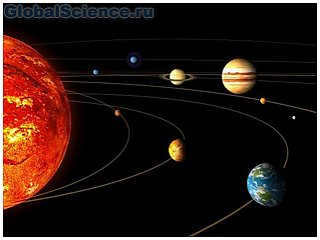
When observing the night sky from Earth, the stars appear to be in close proximity to us. However, in reality, they are incredibly massive and located at a significant distance from our planet. Among these celestial bodies, there are both distant stars and those that are comparatively closer to us.
While many may assume that the Sun is the closest star to Earth, we are actually going to discuss another nearby star known as Proxima Centauri. This particular star was first discovered in 1915 by an astronomer from England. Prior to this discovery, astronomers believed that the closest star was Alpha Centauri. Nevertheless, when considering the physical aspect, these two stars form a binary star system. Thus, the absolute closest star to Earth is a red dwarf.
These small stars are both small in size and temperature. However, over time, they gradually shrink further and increase in temperature. Eventually, these stars transform into white dwarfs. This transformation has also occurred to the nearest star, Proxima Centauri. Additionally, Proxima Centauri is an erupting star. In fact, during the latter half of the previous century, astronomers regarded it as the most active star worldwide.
An American astronomer named Harlow Shelley made the discovery of Proxima Centauri. The star’s brightness increases during a flare. Due to its dimness, Proxima Centauri cannot be observed without the aid of a telescope. It is important to mention that this closest star is also not visible in the northern hemisphere. To catch a glimpse of it, one must be located at a latitude of 27 degrees north. The distance between Earth and this nearest star is approximately 4.2 light years. Additionally, it is worth noting that Proxima Centauri is 7 times smaller than the Sun, which makes it the closest star to our planet. Lastly, it should be mentioned that Proxima Centauri is a part of the same star system as Alpha Centauri.
Alpha Centauri used to be recognized as the nearest star to the Sun. Interestingly, this star is situated in the Big Dog constellation and was initially called VY. The closest star to the Sun orbits around Alpha Centauri every half a million years. However, there are no planets orbiting this star. Additionally, it emits minimal energy.
The Big Dog constellation contains a dwarf elliptical cluster, which is the closest to the Milky Way. On occasion, Proxima Centauri intersects with this cluster. Also included in this constellation is the brightest star, Sirius. It is worth mentioning that Sirius can also be considered the nearest star to our planet and the Sun. It is believed that Prague is the closest city to the stars. According to legend, the destiny of this city was foreseen before its establishment.
New images of the star capable of annihilating all life on our planet have been obtained by scientists

New images of the star Eta Kiel, which is both very large and unstable, have been unveiled by researchers at the European Southern Observatory. If this star were to go supernova, it would pose a significant threat to life on Earth. Eta Kila is a binary system, with one component being the largest star in the entire Milky Way. It has a mass approximately 130 times that of the sun, with the second component having a mass that is
A groundbreaking discovery has been made: the Milky Way is home to the largest star ever found

The European Southern Observatory (ESO) has made a groundbreaking discovery by using various instruments to find the largest stars ever observed. Among them, one star stands out as it weighs 300 times the mass of our sun, surpassing the previous limit of 150 solar masses. These colossal celestial bodies are incredibly bright, shining millions of times more intensely than our own sun.


